The Berkshire Red Kite and Buzzard Survey 2006
5 February 2007 | Chris Robinson
Background to the survey
The distribution and abundance of both Red Kite (Milvus milvus) and Common Buzzard (Buteo buteo) in Berkshire has changed dramatically in the last twenty years. The surveying for the Birds of Berkshire [Stanley et al] took place in 1987 to 1989 and did not record Red Kite at all in the county. Buzzard was recorded only very sparsely with just three proven breeding records within the county boundary, all of these being in the west and with all of these very close to the border (Standley et al. (1996). The main aim of this survey was therefore to assess the current position and attempt an estimate of the numbers of breeding pairs of each species. As with the 2005 Kingfisher survey we aimed to encourage as many birdwatchers as possible to get involved in simple survey work. Co-sponsors of the survey were the Newbury District and the Reading Ornithological Clubs and there was good publicity given via both bird clubs' websites as well as the widely read berksbirds website and Yahoo Group.
Survey methodology
Both species have a basically similar, although not identical, breeding timing and territorial habits. Buzzards, once paired, tend to hold their territories throughout the year whereas Kites, particularly young birds, will range quite widely outside the breeding season and often gather in large roosts or feeding parties over the winter period. However both birds start their breeding at almost the same time (late March to early April) and, with similar clutch sizes and incubation/fledging times, breeding activity is effectively contemporaneous. For these reasons it was decided that the survey method and period for both species could be the same, running from January to end of July; with records from April through June providing the main breeding evidence and the early and late season records providing supporting backup. This being a "mass participation" survey, the methods were kept deliberately simple and observers were asked to simply record the date and location of any sightings and make notes on activity or interesting behaviour if these were observed.
Survey returns
Records were received from three sources:
- Paper or email sent in to the survey organisers in response to our publicity
- Records downloaded from the 'Sightings' page of the berksbirds website
- Records submitted to the Berkshire Bird Bulletin
Once the few duplicate records had been removed this resulted in nearly 2500 records for Red Kite and nearly 1500 for Buzzard; a fantastic achievement. The great majority of these included a four or six-figure grid reference but further work was needed on a few of them in order to supply a grid reference so that mapping software could be used for the anlaysis. Once other errors had been weeded out these data were entered into a MapMate� database for analysis and production of distribution maps. As well as straightforward number reporting a number of observers gave detailed or background information on what they saw and we are very grateful to all those who took the time and trouble to send in records for this survey. There is a section at the end of this report which summarises some of the extra-survey material
Analysis method
Kite
This species has, of course, been the subject of a reintroduction programme led by the Nature Conservancy (now Natural England) and RSPB which started in 1989. The first releases in the Chilterns were made in that year and continued for five years, with a total of 93 young birds being released. By 2004 the estimated number of breeding pairs in SE England was in excess of 200, a figure which has increased annually, with Berkshire sightings becoming evermore frequent and widespread. Adult red kites only rarely undertake long-distance movements, tending to remain within 4km of their nest site throughout the year. In contrast, some first-year birds disperse away from their nest site and may range over considerable distances. Many dispersing birds subsequently return before making their first breeding attempt, as kites are reluctant to breed far from their natal (or release) area. This is one of the reasons why kites are slow to naturally recolonise areas from which they have been lost, even when conditions remain suitable. Kites in England do not usually travel more than about 4km from their roost in order to find food and utilise an area of up to 20-30km (English Nature (2002) during the winter. The roosts tend to break up in spring as new pairs move away to potential breeding sites. Unlike many birds of prey, kites are not territorial and defend only a very small area close to their nest from other kites. Foraging areas are shared and active nests are often only a few hundred metres apart (English Nature (2002). As may be seen from the above, without definite evidence of breeding, e.g. discovery of a nest or fledged young, determining the breeding status of these birds from sightings alone would need careful analysis and, it is concluded, can never be an exact science. The main objective was to assess the number of breeding pairs in the county so some or all of the following criteria were applied to each cluster of records in any 1km square in order to gauge whether it was a breeding territory (or part of one):-
- If the recorder reported finding a nest; saw evidence of nest building or saw adults with juveniles in a location where breeding had been previously suspected, this should be taken as proof of breeding.
- The main breeding months are April, May and June. In the absence of the above evidence of breeding, multiple records in any 1km square in all three of these months should provide a definite indicator that birds were holding territory and hence attempting breeding (breeding status = confirmed).
- Multiple records from any 1km square in any two of these months should provide a strong indication that birds were holding territory (breeding status = probable).
- Multiple records (however numerous) in any 1km square in just one of these months would only constitute a breeding status = possible. On its own this type of record would normally be insufficient to class the square as a breeding one, but in a few cases there might be further indicators from e.g. winter or field notes (see criterium 6 below).
- Adjacent squares meeting criteria (2), (3) or (4) above would need to be scrutinized further in order to assess whether this constituted one, two or more breeding pairs. Given the sometimes small size of the Kite's defended territory, without supporting field notes, this could largely be a matter of guesswork. As a rule of thumb it was decided that records with a separation of >1km would define separate breeding.
- As previously paired Kites are known to start breeding early, March records could provide additional inference of breeding if they matched later ones in the same square (say, two out of three of the months April, May or June).
- Winter and July records would be used cautiously alongside field notes in an attempt to clarify status in areas of doubt.
Buzzard
Essentially the same analysis method as above was adopted for Buzzards. The exception was that as paired Buzzards usually hold territory all year round, the significance of January � March records is potentially higher. Locations with insufficient records from the breeding season (for example due to their more remote location and hence lack of visitors) might therefore be supplemented with winter ones and possibly elevated into a higher category of breeding status. As the Buzzard's breeding territory also tends to be larger there is less likelihood of error over territory overlap when records came from one or more adjacent 1km squares, making the 1km separation "rule of thumb" a potentially more reliable one.
Results
Red Kite
Locations of 1km squares having records of Kites in all three of the main breeding months (Criterium2) were first plotted. This resulted in the distribution shown below:-
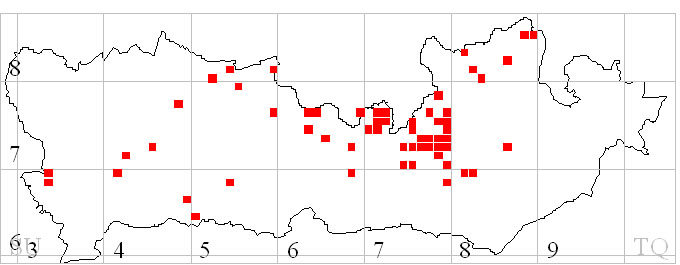
Figure 1. 1km squares having Red Kite records occurring in every main breeding month (April, May and June)
As can be seen, this shows a number of adjacent squares many of which may represent the same bird. All such squares were therefore scrutinised for further clues and any square adjacency was eliminated using Criterium 4, unless definite evidence of two (or more) pairs in close proximity was found. Given the Kite's sometimes small defended territory, this may have resulted in an over-conservative estimate but it was felt safer to err on the side of caution. The amended distribution revealed 36 breeding territories and looked like this,:-
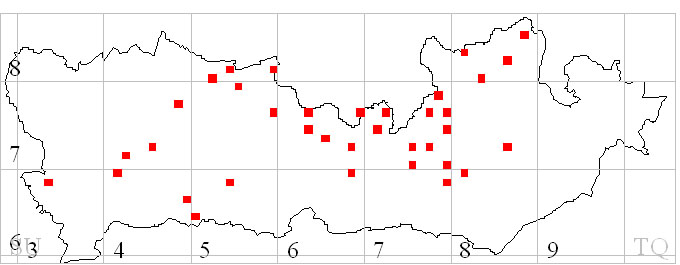
Figure 2. Breeding months distribution with likely overlapping territories eliminated
Next, squares having records from two out of three of the main breeding months (Criterium 3) were plotted and each was examined in detail to establish the likelihood of breeding using Criteria 4 thru 7. Any squares in which an observer had found a nest or other definite breeding evidence were also included in this list. The proximity of these squares to previously established breeding squares (see Fig 2) was then examined and any necessary eliminations made. In practice, no use was made of Criterium 7 (winter records) as it was felt to be too unreliable. This process was quite time consuming and at times required a degree of subjectivity, local knowledge and (dare I say!) guesswork; however I again erred on the side of caution so, if anything, the results will be pessimistic. The 15 extra breeding squares established by these methods are shown below:-
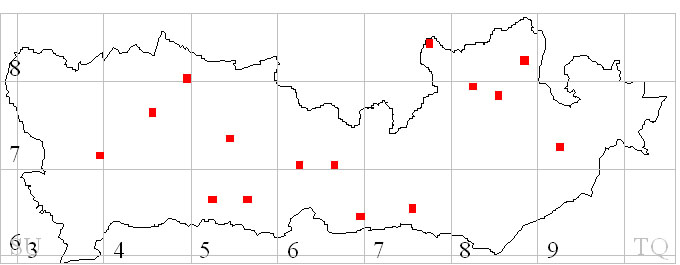
Figure 3. Other probable breeding 1km squares deduced by analysis of dataset or confirmed by observation
Finally, both sets of distribution were combined to reveal the complete distribution:-
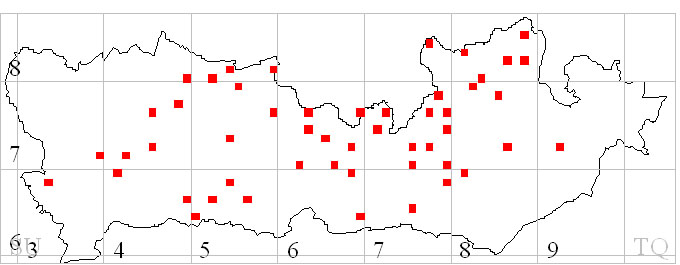
Figure 4. All records combined to show breeding Red Kite distribution 2006, by 1km square
This reveals that there was a minimum of 51 pairs of Red Kites which were either breeding or attempting breeding in Berkshire during 2006. A remarkable transformation in less than fifteen years!
Buzzard
A similar analysis method was adopted for Buzzard. First, the distribution of all squares containing records from all three main breeding months was plotted:-
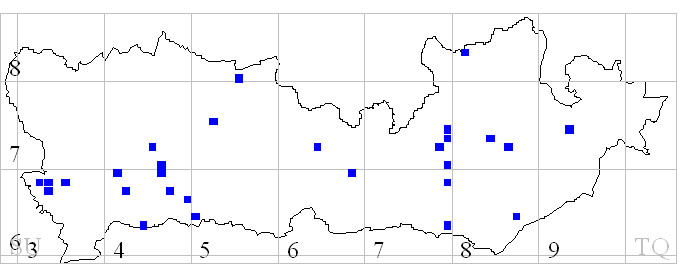
Figure 5. 1km squares having Buzzard records occurring in every main breeding month (April, May and June)
Adjacent squares in the above distribution were then examined and eliminations made where they were likely to relate to the same birds. This revealed 23 breeding pairs of Buzzard :-
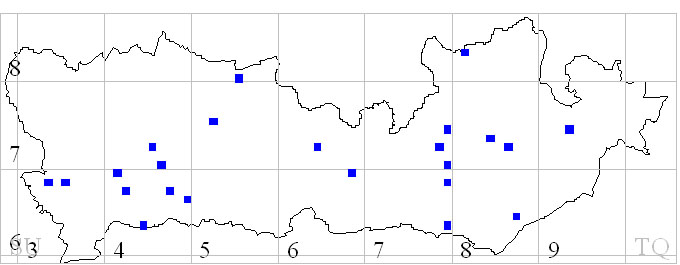
Figure 6. Breeding months distribution with likely overlapping territories eliminated
Then squares having records from two out of three of the main breeding months (Criterium 3) were plotted and each was examined in detail to establish likelihood of breeding using Criteria 4 thru 7. To these were added those few squares which had definite confirmation of breeding (Criterium 1) and which had not already shown up in the previous analysis. The proximity of these squares to previously established breeding squares (see Fig 6) was then examined and any necessary eliminations made. This produced a further 25 breeding territories:-
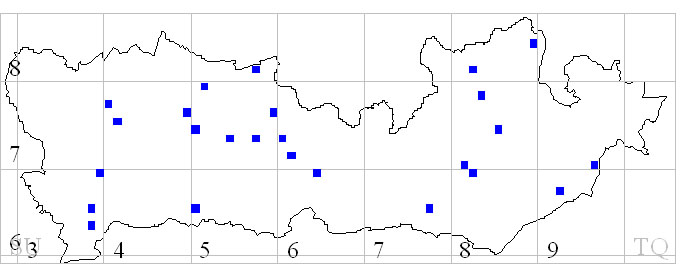
Figure 7. Other breeding 1km squares deduced by analysis of dataset or confirmed by observation
Finally, the two distribution maps were combined to obtain the full distribution of breeding pairs:-
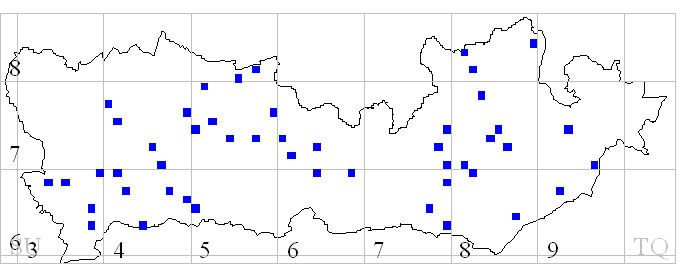
Figure 8. All records combined to show breeding Buzzard distribution 2006, by 1km square
This reveals that there was a minimum of 48 pairs of Buzzard which were breeding (or attempting breeding) in Berkshire during 2006. Again, an amazing and welcome increase in such a short time!
Conclusions and Comments
Note the lack of breeding confirmation for both Buzzard and Red Kite in the northwest of the county (Lambourn Downs and the area immediately to the east), particularly noticeable for the latter species. This is almost certainly due to the lack of regular observers in this area; although there were scattered records throughout this region and survey period, the majority coming from the first three months, none were sufficiently close in either geography or time to draw conclusive evidence of breeding. Hearsay reports of nesting of both species in the Lambourn area were received but were unable to be substantiated and it suspected that other such locations will exist. It is interesting to observe the difference in southeastward distribution of the two species. The range limit for Red Kite is clearly visible as shown by the red dotted line on the map below and is still some way from the Berks/Surrey border :-
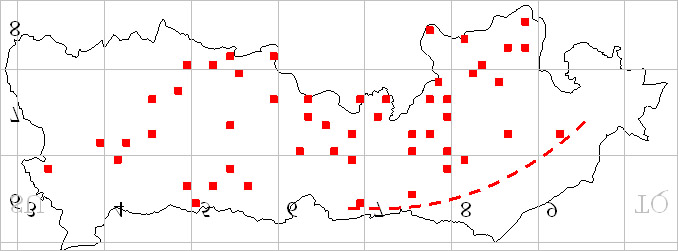
By comparison, distribution of the Buzzard in the county is much more complete, albeit still a bit patchy in areas of low observer activity. The map below shows the two distributions overlayed to show this contrast (Red = Kite, Blue = Buzzard, Purple = Both) :-
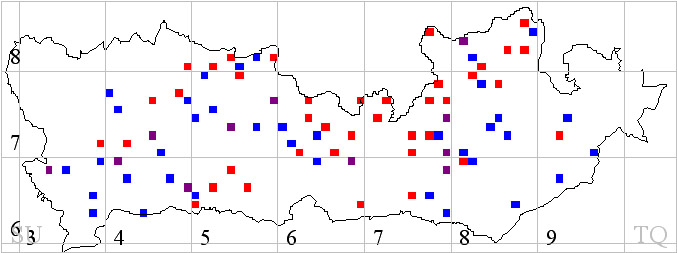
Compare also the difference in southwestward and southeastern expansions from the original release site for Red Kite. The expansion southwestwestwards has been far more rapid :-
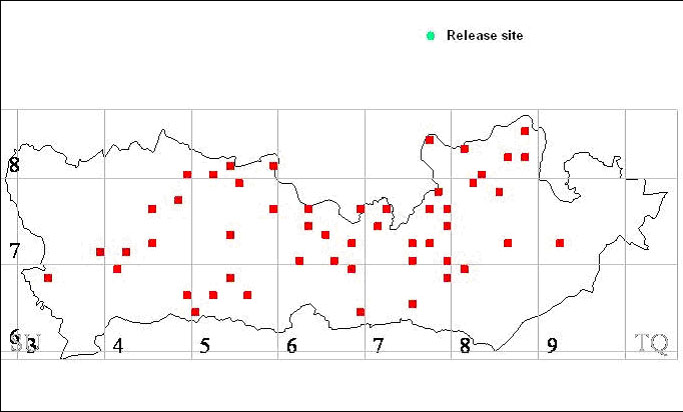
Fieldnotes
The following is a compendium of just some of the many interesting fieldnotes submitted by observers.
Interactions with other birds were mentioned by many observers, usually harassment by corvids, but other sightings included a Kite being mobbed by a pair of Peregrines, a Buzzard chased off by a belligerent Lapwing, a Kite apparently chasing a Blackbird, numerous assaults on Kites by pigeons (and vice versa) and two Buzzards "investigating" a passing Osprey [like they do a lot in Berkshire!! Ed.]. Kites and Buzzards were also frequently reported associating with each other, nearly always in small numbers soaring together and presumably eyeing the same food source. There were many reports of large numbers of birds together. For Kites these were all during the winter months (Jan-Mar, when they will often roost together) and the highest counts were 28 in mid-February near Aldworth (there is a winter roost site nearby) and 22 in late January perched in trees near the Hampshire border south of Combe Hill (presumably also a pre-roost gathering). Post-breeding, at the end of July, there was a report of 19 birds all in one field at Coldharbour, attracted by a tractor breaking the ground in readiness for ploughing. Buzzards did not occur in quite such large groups but there was a maximum count of 14 at Walbury Hill in early January when 10 were together in air (with a peregrine as well as a red kite!) and at least 12 in the same area at Combe Gibbet at the end of March. Gatherings of Buzzards at this time of year usually relate to unpaired birds but the earlier high numbers would no doubt have been boosted by the reported feeding of pheasant carcases (by a gamekeeper no less!) to both Buzzards and Kites. Other dietary preferences were also mentioned. Some people are now providing food for Kites in their gardens and chicken carcases attracted up to five to a garden in Twyford, the birds coming down one at a time to snatch food, somewhat nervously at times apparently. Several other reports were received of garden feeding either on "natural" food (usually pigeons) or bird table scraps. Pigeons were mentioned several times as food items for Kites and seem to be a fairly common prey item. This incident in Caversham, quoted verbatim from the observer's notes gives an unusual insight into how they might sometimes catch them:-
A pair of Kites were circling fairly high for a few minutes, then descending. Then one of the pair swooped into a small flock of pigeons flying above the river and took one. The noise of the impact was audible from the ground! It then took its prey across to the south side of the River Thames. The other kite then ascended to a great height and continued to circle for a couple of minutes, before flying east.
A description of another interesting feeding attack came from a non-birder but was verified by one who is and seems to be reliable:-
A large bird, thought to be a juvenile red kite, entered garage and killed 2 newly-fledged robins which were on the floor (having left the nest in the garage). Kite did not know what to do next - observer (not JF) picked up bird and released it outside where it flew away.
Acknowledgments
Many thanks to :- Mike Turton who did all the work in transcribing postal and email submissions into MapMate-ready format. Nigel Snell for his helpful comments on my analysis methods. Everyone who submitted Buzzard or Kite records at any time or to any place; this report would not have been possible without you!
Sources
- Standley, Swash, Collins and Bucknell (1996) The Birds of Berkshire.
- English Nature (2002) Return of the Red Kite.